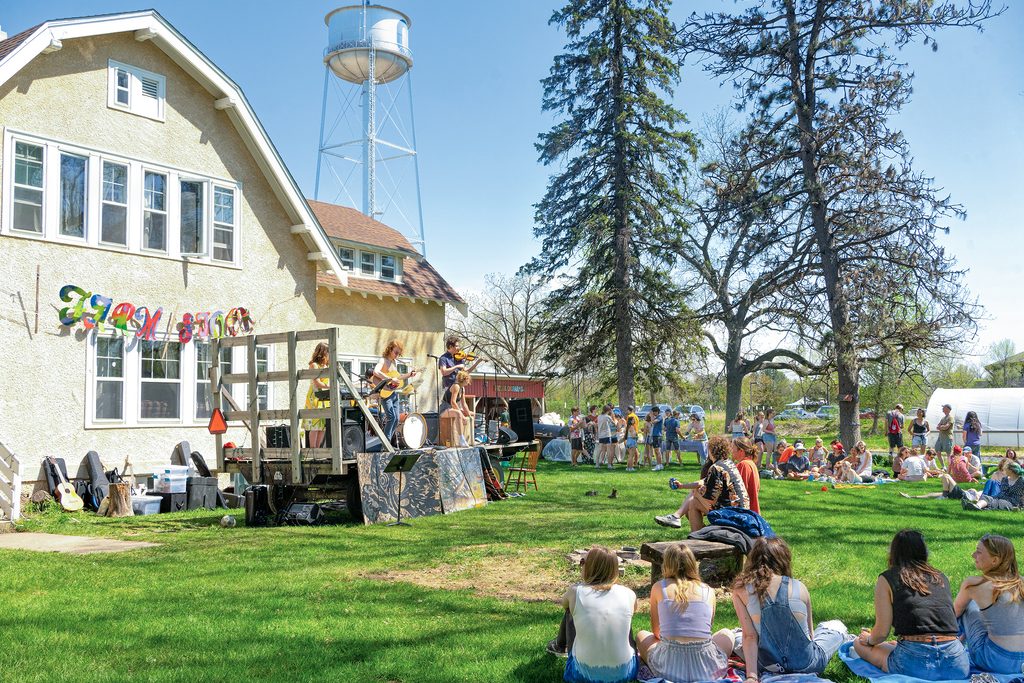
In the 1920s, Carleton constructed a building to house students working on its farm. In 1971, after the structure had gone unused for several years, a group of students convinced the college to let them take residence. Since then, Farm House has consistently attracted students interested in living a more sustainable lifestyle and engaging in a lively debate about what that means.
The house’s 17 residents share meals, using farm ingredients when possible; help Carleton’s farm interns with harvest; host porch concerts and Farmstock; and when it’s time to move on, sign their names on a big tree that’s painted on one of the building’s inside walls.
The original structure is slotted for replacement as part of the new Student Life and Housing Plan [see “At Home on Campus” in this issue]. But to ensure its spirit lives on, one of the five new residences on Lilac Hill will be designated the new Farm House. Close to its original location, it will be Phius (Passive House Institute U.S.) CORE certified, which denotes near-net zero energy use. “We’re also hoping to put a print of the tree on a wall so students can continue leaving their mark,” says Carleton facilities director Steve Spehn.
“Farm House was a huge part of my Carleton experience,” says James Harren ’19. “But environmental issues are different now . . . it’ll be interesting to have a combo of the agrarian, Wendell Berry ethos living within a new, energy efficient building.”

Add a comment